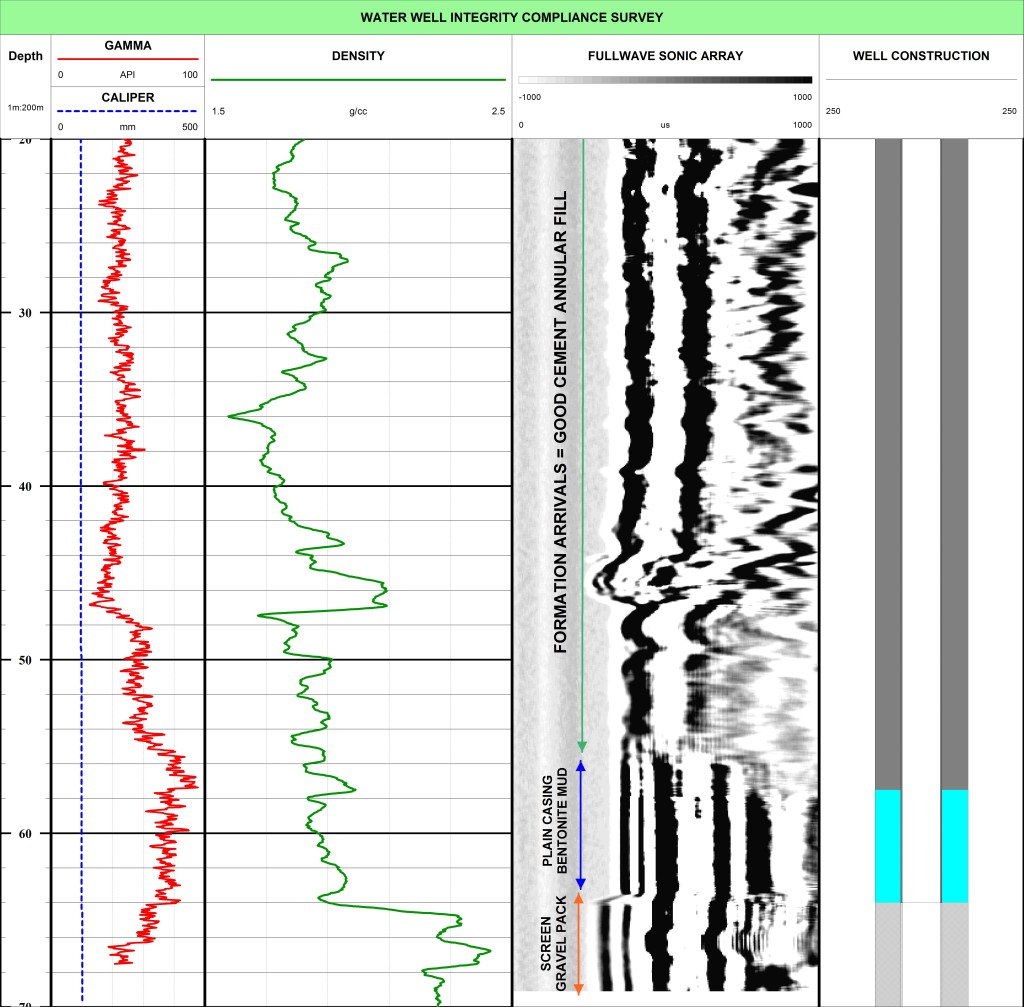The need for integrity and compliance testing of local water wells has been highlighted in a recent groundwater forums to halt the loss of a valuable resource whether through age of the well or poor installation procedures.
<h4>What is the problem?</h4>
Any borehole drilled in the ground has the potential to connect two or more subsurface aquifers through the borehole itself.
Commonly mineral exploration boreholes are backfilled after the completion of drilling.
Water wells are a bit trickier as it is common to line the borehole with casing, sections of which are deliberately open (screened) to allow water from a certain interval to enter the casing. However unless the annular area between the outside of the casing and the rock is sealed then this can also act as a connection highway between aquifers. The most common method of sealing this annular area is to fill it with cement, commonly a pressurised procedure.
There may be many reasons why the annular area has not been filled or sealed which leads to issues and the phenomena of “Leaky Wells”. We need to get on top of this problem to prevent loss of a valuable resource.
<h4>Cement Bond Logging</h4>
A geophysical logging technique, known and cement bond logging, has been employed for many years in the groundwater field to assess the fill of the annular area behind the casing. The acoustic properties of the compressional arrival of the fullwave sonic probe is used to identify unfilled space behind the casing. Best used in steel casing, the technique is still applicable in PVC casing and can be ably supported by density logging.
<h4>When to run the logging</h4>
On new water wells, the geophysical logging is best performed soon after the completion of the well construction, particularly with the drilling rig in place so any issues can be remedied without need to re-mobilise a drilling rig. The Fullwave sonic and density logging which forms part of a integrity and compliance tests gives good protection for both the drilling company and the owner.
For old water wells, there is no time constraint. The fullwave sonic logging will provide valuable information of the condition of the well casing for decisions on rehabilitation of the casing or closure and backfilling of the casing.
All geophysical logging is performed within the casing of the water well.

